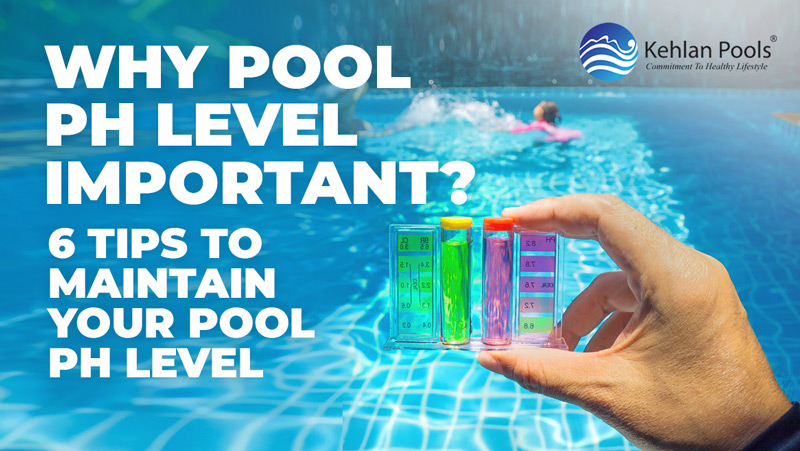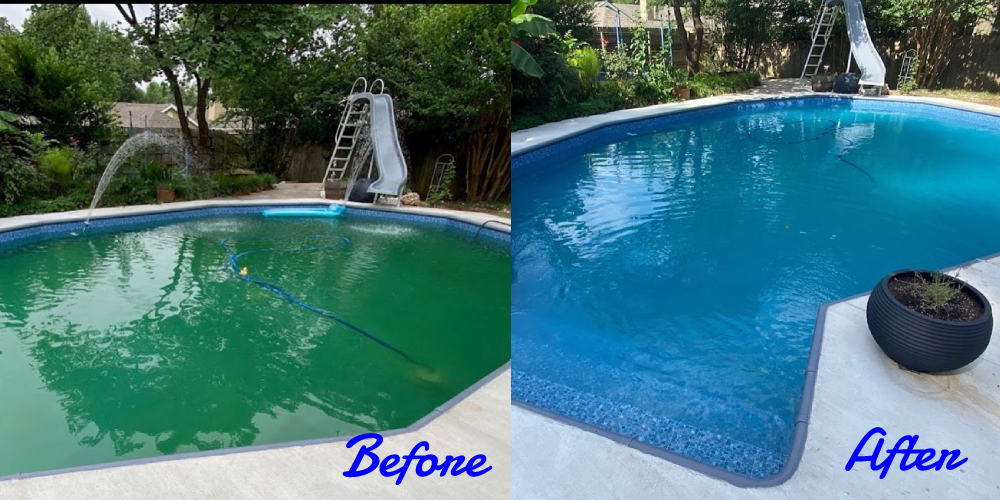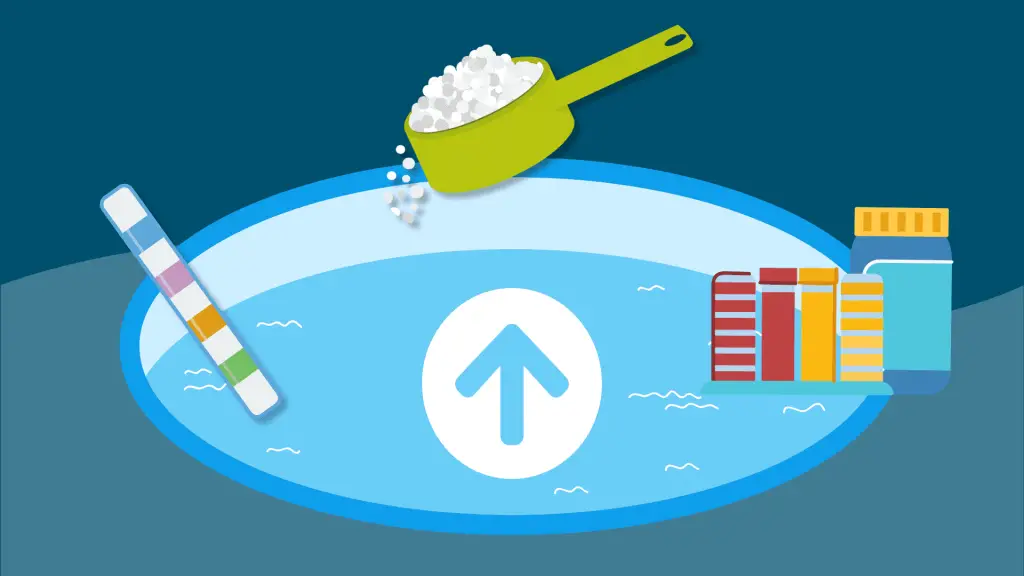To raise pH in your pool, add soda ash or baking soda according to the manufacturer’s instructions. A balanced pH level is crucial for maintaining a clean and clear pool.
If the pH of your pool water is too low, it can be corrosive and irritate swimmers’ skin and eyes. Moreover, an imbalanced pH can reduce the effectiveness of chlorine and other sanitizers. To address this issue, you can raise the pH levels by adding soda ash or baking soda.
These carbonates will increase the alkalinity of the water, helping to stabilize the pH. However, it is essential to follow the manufacturer’s instructions and test the water regularly to ensure the pH levels remain within the recommended range. By maintaining the proper pH level, you can enjoy a safe and comfortable swimming experience.

Credit: kehlanpools.com
Importance Of Ph Balance In Pool
Keeping your pool’s pH balance in check is crucial for maintaining a healthy and safe swimming environment. The pH level refers to the acidity or alkalinity of the water, and it greatly impacts water quality and the well-being of swimmers. Let’s delve into the significance of maintaining the pH balance in your pool to ensure a refreshing, enjoyable, and safe swimming experience.
Impact On Water Quality
Maintaining an optimal pH level in your pool is essential for preserving water quality. When the pH is too low or too high, it can lead to a host of issues such as corrosion of pool equipment, inefficient sanitization, and cloudy water. Unbalanced pH levels can also diminish the effectiveness of pool chemicals and lead to the growth of algae and bacteria. By closely monitoring and adjusting the pH, you can ensure that the water remains clear, clean, and safe for swimming.
Effects On Swimmers
The pH balance of the pool water directly affects the skin, eyes, and overall comfort of swimmers. Low pH levels can cause skin and eye irritation, while high pH levels can result in dry, itchy skin. An imbalanced pH can also affect the efficacy of sunscreen, making swimmers more susceptible to sunburns. By maintaining the proper pH balance, you can provide swimmers with a comfortable and safe swimming environment.

Credit: theelitepool.com
Understanding Ph Levels
Understanding pH Levels: Before you can successfully raise the pH in your pool, it’s crucial to have a good grasp of pH levels.
The Ph Scale
pH measures the acidity or alkalinity of a substance on a scale of 0 to 14. A pH of 7 is neutral, below 7 is acidic and above 7 is alkaline.
Ideal Ph Range For Pools
For pools, the ideal pH range falls between 7.2 and 7.8, which ensures comfort for swimmers and protects pool equipment from damage.
Common Causes Of Low Ph
Raising the pH level in your pool is crucial for maintaining crystal-clear water and a safe swimming environment. However, before you can take steps to increase the pH, it’s essential to understand the common causes of low pH. By identifying and addressing these factors, you can effectively raise the pH level in your pool. Below are the two primary culprits that often lead to low pH levels:
Rainwater And Runoff
Rainwater, while refreshing to our plants and gardens, can wreak havoc on the pH level of your pool. The water from rain is naturally acidic due to carbon dioxide in the atmosphere, and it can bring down the pH of your pool water when it mixes in. Additionally, runoff from surrounding areas can introduce contaminants and acidifying substances, further lowering the pH. The frequency and intensity of rainfall in your locality can play a significant role in the pH fluctuations of your pool water. Therefore, it is crucial to regularly test and adjust the pH level after heavy rains to prevent any potential imbalances.
Chemical Imbalance
A chemical imbalance within your pool can also contribute to a low pH level. Factors such as an excess amount of chlorine or a lack of alkalinity can throw off the delicate pH balance. Excessive chlorine can act as an acid and lower the pH, while insufficient alkalinity prevents the water from effectively buffering against acidity. Testing your pool water regularly and maintaining the proper balance of chemicals is vital to prevent pH fluctuations and maintain optimal water quality.
Methods For Raising Ph
Methods for Raising pH:
Raising the pH level of your pool is an essential task to maintain a healthy and balanced swimming environment. While a low pH level can lead to skin and eye irritation, a high pH level can result in cloudy water and reduced effectiveness of chlorine sanitizers. In this section, we will discuss two effective methods to raise the pH level of your pool: using pH increasers and aeration techniques.
Using Ph Increasers
Brief introduction: pH increasers are chemical products specifically designed to raise the pH level of pool water. They are available in powder, liquid, or granular form and can be easily found at pool supply stores.
Dosage and application: To use a pH increaser, follow the instructions provided on the product packaging as dosages may vary depending on the size of your pool. Generally, you can scatter the required amount of the pH increaser directly into the pool while the pump and filtration system are running. Make sure to distribute it evenly across the surface of the water for optimal results.
Testing and re-treatment: After adding a pH increaser, wait for a few hours and test the pH level using a reliable pool water testing kit. If the pH level is still below the recommended range (7.4 to 7.6), you may need to add more pH increaser to achieve the desired pH level. Repeat the process as needed until the pH level is within the appropriate range.
Aeration Techniques
Brief introduction: Aeration refers to the process of increasing the pool water’s exposure to air, which helps to drive off excess carbon dioxide and lowers the pH level. This method is especially beneficial for pools with high levels of dissolved carbon dioxide.
Waterfall or fountain: Installing a waterfall or fountain in your pool can introduce air into the water, promoting aeration. The flowing water creates movement and enhances air-water interaction, leading to a gradual increase in pH level over time.
Air jets or bubblers: Another effective way to aerate your pool is by installing air jets or bubblers. These devices release streams of air bubbles into the water, facilitating gas exchange and helping to raise the pH level. They can be placed strategically around the pool to maximize aeration efficiency.
Water sparging: If you have access to an air compressor or an aeration system, you can utilize the technique of water sparging. This involves injecting compressed air into the water through diffusers or air stones, creating small bubbles that bring about aeration and ultimately increase the pH level.
Choosing The Right Products
When it comes to maintaining the pH level of your pool, choosing the right products is essential. pH increasers play a crucial role in balancing the pH level and ensuring optimal water conditions for swimming. By selecting the appropriate products, you can effectively raise the pH level and avoid any potential issues caused by imbalanced water.
Comparing Ph Increasers
With numerous pH increasers available in the market, it can be overwhelming to make a choice. However, understanding the different options and comparing them can help you make an informed decision. Here are some commonly used pH increasers:
- Sodium Carbonate: Also known as soda ash, sodium carbonate is a popular choice for raising the pH level. It dissolves easily in water and provides a quick alkaline boost to the pool.
- Baking Soda: This household staple, sodium bicarbonate, works as an effective pH increaser for pools. It is readily available and helps stabilize the pH level without causing drastic changes.
- Calcium Carbonate: Often sold as pool calcium increasers, calcium carbonate can also raise the pH level. However, it is important to note that it can increase the water’s hardness, which may require additional maintenance.
Considering Environmental Impact
While it is important to choose a pH increaser that effectively raises the pH level, considering the environmental impact is equally crucial. Opting for environmentally friendly products not only safeguards the environment but also ensures the well-being of swimmers. Look for pH increasers that are biodegradable and do not contain harmful chemicals.
| Product | Biodegradable | Chemical-Free |
|---|---|---|
| Sodium Carbonate | Yes | No |
| Baking Soda | Yes | Yes |
| Calcium Carbonate | Yes | No |
By considering the environmental impact of the pH increasers you use, you contribute to a greener and safer swimming experience for everyone.
Tips For Safe Application
Raising the pH in your pool is a vital part of pool maintenance to ensure a safe and enjoyable swimming environment. However, it’s important to apply pH-raising chemicals safely to prevent any potential hazards. Here are some essential tips for safe application.
Measuring And Testing
Before adding any pH-raising chemicals to your pool, it’s crucial to accurately measure the current pH level using a reliable testing kit. The ideal pH range for a pool is between 7.4 and 7.6. If the pH level falls below this range, you can then proceed with adding the necessary chemicals to raise it to the optimal level.
Avoiding Overdosing
It’s essential to carefully follow the manufacturer’s guidelines and dosage recommendations provided on the pH-raising chemical packaging. Overdosing can lead to an excessive increase in pH, which can result in skin and eye irritation for swimmers. Always measure the chemicals accurately and avoid adding more than the recommended amount to prevent any adverse effects.
Maintaining Ph Balance
To raise the pH in your pool, consider adding soda ash or sodium carbonate. Test levels regularly and adjust accordingly for optimal maintenance. Proper pH balance ensures safe and enjoyable swimming experiences.

Credit: atlas-scientific.com
Professional Advice And Consultation
Raising pH in your pool can be a delicate process that requires professional advice and consultation. Seeking guidance from experienced pool specialists can make a significant difference in maintaining the pH balance of your pool water.
Seeking Pool Specialist Assistance
When it comes to adjusting pH levels in your pool, reaching out to a pool specialist is crucial. These professionals have the knowledge and expertise to assess your pool’s current pH levels accurately.
Understanding Pool Maintenance Services
Pool maintenance services cover a range of tasks, including pH level monitoring and balancing. Pool specialists use specialized equipment to accurately measure and adjust the pH of your pool water.
Conclusion
Maintaining proper pH levels is essential for a clean and safe pool environment. By following the steps outlined in this guide, you can easily raise the pH in your pool without any hassle. Remember, regular testing and adjustment are key to ensuring your pool water remains balanced and inviting for a refreshing swim.
Keep these tips in mind to enjoy a sparkling pool all season long!





